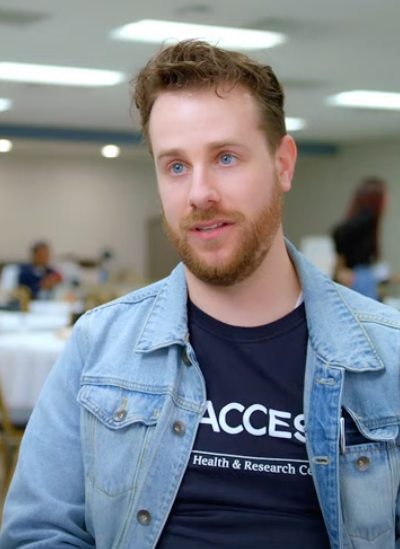The opioid crisis is a public health emergency that has resulted in a dramatic increase in both opioid overdose deaths and the risk of HIV and hepatitis C (HCV) outbreaks in Michigan. The Michigan Overdose Prevention Coalition is taking on the crisis by advocating for thoughtful policy changes to ensure harm reduction is a priority.
Together, we can reduce overdose deaths in Michigan.
What is harm reduction?
Challenging perceptions and unraveling stigma
Challenging perceptions and unraveling stigma
Harm reduction keeps us safe and alive. By wearing helmets and life vests, applying sunscreen, or carrying first aid kits, we participate in different forms of harm reduction almost every day.
Imagine yourself here.
But when harm reduction is applied in the context of substance use, things change. Stigmas, damaging stereotypes, and the mindset that those who use drugs are undeserving of basic protections, dignity, and respect settle in, turning people away from effective ways to reduce the negative impacts of substance use.
The Michigan Overdose Prevention Coalition aims to change this narrative by building acceptance and understanding of harm reduction, educating policymakers, engaging communities, and advocating for effective policy changes.
Harm reduction is about meeting people where they are with compassion and support.
This includes linking people to life-sustaining health services, making public health equipment like sterile syringes available through syringe service programs (SSPs) to prevent the spread of HIV and HCV, and enabling access to naloxone—medicine that reverses the effects of an opioid overdose.
What is a syringe service program?
A syringe service program is a community-based prevention program that connects people who use substances with comprehensive care and resources, including:
- Linkage to substance use treatment
- Access to and disposal of sterile syringes and injection equipment
- Vaccination, testing, and linkage to care and treatment for HIV and HCV
- Training in overdose prevention and response with naloxone
Watch a video to learn why syringe service programs work.
Syringe service programs in Michigan
Expanding SSPs statewide means more resources for users, along with safer and cleaner communities. These maps show the SSP locations in Michigan by county and congressional districts.
Know this about SSPs
Our communities and our neighbors need SSPs.
The Centers for Disease Control and Prevention (CDC) listed 11 counties in Michigan’s northern Lower Peninsula as highly vulnerable to an HIV outbreak among people who inject drugs. The Michigan Department of Health and Human Services (MDHHS) ranked all Michigan counties based on their risk for an HIV outbreak among people who inject drugs, with 18 found to be most vulnerable.
By expanding SSPs statewide, counties can provide more resources and encourage safer, healthier communities.
SSPs save lives and millions of taxpayer dollars.
Needle exchange and syringe service programs save taxpayers money by preventing infection. The programmatic cost of one new syringe is $1. The average lifetime cost of treating one person with HIV is almost $450,000. Healthcare costs in Michigan associated with skin, soft tissue, and vascular infections from substance use are estimated at more than $400 million per year.
SSPs effectively protect individuals and their communities from harm.
SSPs are associated with an estimated 50 percent reduction in HIV and HCV incidence. When combined with medication-assisted treatment, HCV and HIV transmission is reduced by over two-thirds. SSP participants are five times more likely to enter treatment programs than those who do not seek SSP services.
Additionally, studies of cities that have implemented SSPs found no corresponding increase in crime. Also, according to the CDC, because SSPs facilitate the safe disposal of used syringes, studies have shown they protect first responders and community members from accidental needlesticks from improperly discarded needles.
What Is Naloxone?
Naloxone—also known as Narcan®—is a safe medication used to prevent opioid overdose deaths.
Watch a video to learn how harm reduction strategies save lives.
Know this about naloxone
Naloxone enables a faster first response when and where it’s needed.
By equipping and training the people most likely to witness an overdose how to respond, more lives can be saved in seconds.
Naloxone poses no risk of harm.
Naloxone is a safe medication used by medical professionals and first responders of all types to prevent opioid overdose deaths. It carries no risk of abuse and has no effect on people who do not already have opioids in their systems.
Naloxone’s availability does not encourage drug use.
Expanded access to naloxone means fewer preventable deaths and more lives saved. Passed in 2022, Public Act 176 of 2022 enables the chief medical executive at MDHHS to expand access to naloxone and allows for its distribution by community-based organizations under the statewide standing order, protecting them from liability.



